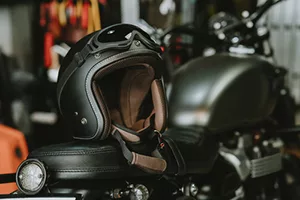
In 2021, there were 321,956 motorcycle riders registered in Illinois, the tenth most of any state in the nation. With so many motorcyclists, it is important to be aware of the risks involved. The Insurance Institute for Highway Safety (IIHS) reported that in 2021, there were 12.9 car accident fatalities per 100,000 drivers. However, the Insurance Information Institute (III) released a report specifically detailing motorcycle accidents from 2011-2020, with the fatality rate for motorcyclists in 2020 at over 67 per 100,000 – motorcyclists die in accidents at almost 6 times the rate as people driving in cars or other enclosed vehicles. That number gets even higher when you look at deaths per distance traveled: In 2021 in total, there were 1.37 deaths per million miles driven. For motorcyclists alone, that number was 30.05 per million miles – over 20 times as deadly.
Still, biking can be an incredibly rewarding, freeing experience for the millions upon millions of Americans that ride each year. But to lessen the chances of a devastating injury, it’s important to keep in mind the phrase ATGATT: All the gear, all the time. There are a number of different types of motorcycle safety apparel, and as ATGATT says, all of it should be worn before riding a motorcycle, no matter how short the trip.
Illinois is currently one of 3 states without any helmet requirement laws for motorcyclists. Even so, our experienced motorcycle accident lawyers strongly advise wearing helmets at all times. Numerous reports from the National Highway Traffic Safety Administration (NHTSA) show that after states weaken their own helmet requirement laws, motorcycle accident fatalities and traumatic brain injuries immediately and dramatically increase – sometimes by over 50%.
Any helmet you wear should be marked by the Department of Transportation (DOT) as certified for motorcycle use. There are a few important criteria to look for in any helmet to be used when riding:
Legs and arms should always be covered when riding, but not all protection is created equal. Jackets specifically designed for motorcycle riding come with numerous protective features that traditional jackets simply do not have. Motorcycle jackets are sewn with double seams to increase their strength, in addition to cushioning body armor and adjustable ventilation. Jackets should fit snugly enough to withstand movement from strong wind and be made from either leather or a high-quality textile that can resist abrasion and provide some water resistance.
Riding pants are one of the more neglected pieces of motorcycle safety apparel. Simple long pants or jeans are not enough in the event of a motorcycle crash. Most motorcycle pants are made to be worn over another set of pants beneath and are equipped with ventilation and armor for body parts most likely to be harmed in a collision. Some pants are made to be zipped together with a jacket to form a suit, which provides an additional safeguard against either piece of clothing from shifting on the body. Protective riding pants should also be brightly colored or constructed with a retroreflective cover for visibility.
A good pair of motorcycle gloves is essential, as the hands are often the first point of contact with the ground in a crash. Gloves for riding should be made of strong material to absorb abrasion, such as leather or reinforced textiles. Additionally, they should have extra padding in the palms, as these parts of the hands are very likely to be at risk in a crash, while the additional material here does impact dexterity in the rest of the hand.
Motorcycle boots, like the rest of motorcycle apparel, should provide additional armor to weak points of the body. For boots, that is the primarily the ankle and shin. But a few other considerations are also important. Ideally, boots will lace from the inside to prevent laces from becoming stuck on the foot pegs or shifter. If the laces are external, they should be able to be tucked into the boots. They should also be water and oil resistant, with non-slip soles to account for any weather conditions that may impact their stability on the bike. A slip on the foot pe while riding can be disastrous.
If you have suffered an injury in a motorcycle accident that was not your fault, our experienced motorcycle accident lawyers can secure compensation for your injuries. For a free consultation, contact us at (630) 527-1595 or fill out our contact form to discuss your motorcycle accident claim.
"*" indicates required fields











"*" indicates required fields